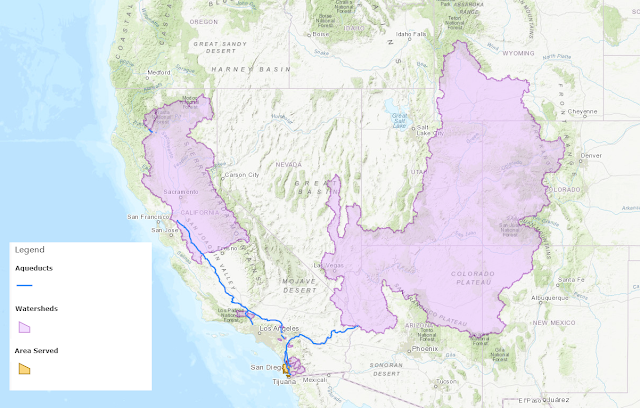Geomorphology in an Urban Environment
Our first project in GIS Apps was to design a mini-project for Geomorphology, specifically in relation to streams. For this project, I wanted to focus on water retention in an urban environment and the effects it could have on the local ecosystem.
Being in Auburn, AL, it was most convenient to use data for this location since it was in a proximity that I could go and physically observe. This turned out well since it's quite difficult determining a cities elevation throughout the city, particularly a relatively flat one like Auburn (the city on the plains). I used GIS to determine what I believe to be an optimal location for a new site for permeable pavers. Permeable pavers are a form of roadway that allows water to permeate through into holding cells until it can properly infiltrate into the ground.
Being in Auburn, AL, it was most convenient to use data for this location since it was in a proximity that I could go and physically observe. This turned out well since it's quite difficult determining a cities elevation throughout the city, particularly a relatively flat one like Auburn (the city on the plains). I used GIS to determine what I believe to be an optimal location for a new site for permeable pavers. Permeable pavers are a form of roadway that allows water to permeate through into holding cells until it can properly infiltrate into the ground.
The Area of Interest (AoI) was selected to be the crossing of W Magnolia Ave and Thomas St. Ponding frequently occurs here, although it was much worse before they added extra storm drainage. It receives all of the runoff from all the way up to Toomer's corner, and the opposite end has water draining from a couple hundred feet into this area as well.
To cover all of my bases, I also checked the local soil type through the Web Soil Survey and found that the soil type in that area (aside from the concrete...) is predominantly Marvyn Soils - which is a very well drained soil type. This is important since it means that water that is retained there will drain well into the local environment.
I was fortunate to have a class in the past in which was able to meet and learn from Dan Ballard - the City of Auburn's regional manager of Urban Water Management. From him, I learned of the project on Toomer's Corner that is designed as Permeable Pavers. This unique system has the design that allows it to capture water through infiltration as its name states "permeable" as opposed to impermeable (typical asphalt). The system on the corner is designed to allow 300"/hr of rain infiltrate into the cells beneath the surface, enabling it to hold 1000s of gallons of water per cell while the water slowly percolates into the ground. These can be scaled up or down depending on needs and only need to be cleaned on average once every 10 years or so, unless your Auburn and you litter the area in question with toilet paper every win. On those occasions, cleaning is needed roughly every 5 years.
Using the infiltration rate of 300"/hr and an area of 405m2, you can ascertain a maximum discharge capture capacity of 816,027.5gal/hr. although this would require a torrential rain event to provide that much capture. Now this figure is just the potential capture for one location. Imagine if they were all throughout a city rather than having impermeable surfaces? Arguably, you could design it so that at least every street corner had this design so that the runoff on the roads would drain at every intersection. Reason's this is an important statistic:
- Auburn uses ~7 billion gallons of water annually (+/-) so any water retention possible helps tremendously.
- Auburn prides itself on beauty and progress, which this design provides both.
- This system helps out the local environment. By better controlling stormwater surge into streams, you can help prevent erosion of their channels, which contributes to sediment contamination of water supplies as well as eutrophication.
Take home message:
Water quality, quantity and the importance of the ecosystem that provides both is becoming increasingly important on a world-wide scale. GIS in its various forms can be used to help locate ideal locations for systems that can help us mediate the damage we're doing to our environment because let's be honest - we're not giving up roads, cars or technology in general to save the planet. We may as well design, implement and encourage the use of technology that helps us keep what we have, without sacrificing quality of life, while taking better care of the environment. Win-Win I'd say but I'm not the one funding this all I suppose so I can only encourage its implementation.





Comments
Post a Comment